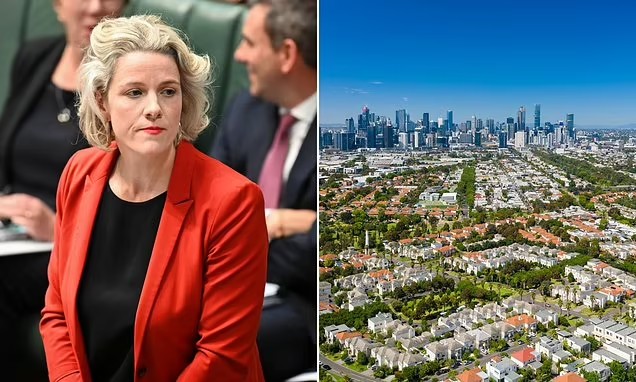Australia is on track to produce 1.03 million homes by 2029, falling short of its national target by 166,000 properties, according to new modelling released on Monday. The shortfall highlights a growing housing crisis that will affect all states and territories, with even the major contributors to the national goal—New South Wales (NSW), Victoria, and Queensland—struggling to meet demand.
The Australian government has set an ambitious target to address the nation’s housing shortages, but the data reveals significant gaps in delivery across the country. NSW, Victoria, and Queensland are key states responsible for a large portion of housing development. However, they are well behind in reaching their quotas, raising concerns about the future of housing affordability and availability.
Housing Minister Clare O’Neil addressed the issue, emphasizing the need for urgent and innovative approaches to solve the crisis. “This problem will not be solved without boldness and decisive action,” O’Neil said. She noted that the current rate of construction is insufficient to meet the growing demand, particularly in areas experiencing rapid population growth and urbanization.
The housing shortfall is compounded by several factors, including rising construction costs, labor shortages, and the increasing demand for housing in Australia’s urban centers. These challenges have made it difficult for developers and governments to keep pace with the requirements of a growing population.
While the national target aims to alleviate housing pressure, the modelling shows that every Australian jurisdiction is facing difficulties in meeting their individual goals. The widespread nature of the shortfall highlights the need for a coordinated national strategy that involves collaboration between federal, state, and local governments, as well as the private sector.
In response to the crisis, the Australian government is exploring policy options to accelerate housing development, including incentives for developers, streamlined approval processes, and increased investment in affordable housing projects. Minister O’Neil stressed the importance of these measures, but acknowledged that more aggressive steps are necessary to address the underlying issues driving the housing shortage.
As the gap between housing supply and demand continues to widen, the effects will likely be felt most acutely by low- and middle-income Australians, who are already facing high rental prices and difficulty entering the housing market.
The release of this modelling serves as a stark reminder of the urgent need for action. The housing crisis is a complex issue that requires innovative solutions and sustained commitment from all sectors of society. Without bold intervention, Australia risks exacerbating an already critical housing shortage that will affect the well-being of future generations.
As the government pushes forward with its housing initiatives, the focus will be on ensuring that the construction of homes not only meets targets but also aligns with the needs of Australians across all regions, including remote and rural areas.

